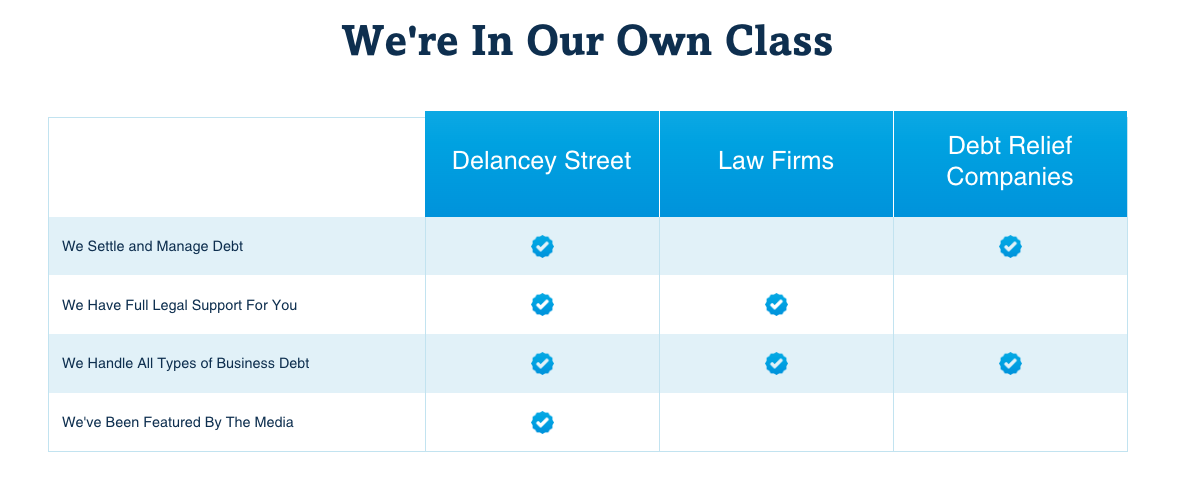What Is an Unlawful Detainer Lawsuit?
An Overview of Unlawful Detainer Cases
An unlawful detainer lawsuit is a legal action that a landlord can take against a tenant who refuses to vacate the rental property after their lease has ended or they have violated the terms of the lease agreement. – It’s basically the formal process for evicting a tenant who won’t leave voluntarily.
These types of cases are pretty common, especially in places with a lot of renters. – They can happen for all sorts of reasons, like not paying rent on time, causing damage to the property, or just staying past the end of the lease without renewing.
 -
-The unlawful detainer process varies a bit from state to state, but it generally starts with the landlord giving the tenant written notice to either fix the issue (like paying overdue rent) or move out by a certain date. – If the tenant doesn’t comply, the landlord can then file an unlawful detainer lawsuit in court to get the legal process started for removing them from the property.
Why Do Landlords File Unlawful Detainer Lawsuits?
There are a few main reasons why a landlord might decide to file an unlawful detainer case against a tenant:
- Nonpayment of Rent – This is probably the most common reason. If a tenant falls behind on rent payments and doesn’t get caught up after proper notice, the landlord can start the eviction process.
- Lease Violations – Things like having unauthorized pets, causing excessive noise or property damage, or using the rental for illegal activities can all violate the lease terms and be grounds for eviction.
- Holdover Tenants – When a tenant’s lease expires and they don’t move out or renew the lease, they become a “holdover tenant” and the landlord can file to have them removed.
- No Lease/Squatters – In some cases, a landlord may need to file an unlawful detainer to remove squatters or tenants who never had a valid lease in the first place.
The unlawful detainer process gives landlords a legal way to regain possession of their rental property when tenants won’t leave voluntarily. It’s meant to be a relatively quick process compared to other civil lawsuits.
The Unlawful Detainer Process Step-by-Step
While the specifics can vary, the unlawful detainer process generally follows these steps:
 -
-1) Notice to Tenant
The first step is for the landlord to properly terminate the tenancy and give the tenant written notice to either cure the violation (like paying overdue rent) or vacate the premises by a specified date. The type and length of notice required depends on the reason for termination and state laws.
2) Filing the Unlawful Detainer Lawsuit
If the tenant doesn’t comply with the notice, the landlord can then file an unlawful detainer complaint and summons with the appropriate county court. This officially starts the eviction lawsuit.
3) Serving the Tenant
The tenant must be properly served with the court paperwork, usually by a court officer or approved third-party. Proper service is required for the case to proceed.
4) Court Hearing
If the tenant responds to contest the unlawful detainer, the case will go to a hearing where both sides can present evidence and arguments. If the tenant doesn’t respond, the landlord can request a default judgment for eviction.
5) Writ of Possession
If the landlord wins at the hearing or by default, the court will issue a Writ of Possession. This authorizes the local law enforcement officers to remove the tenant and their belongings from the property if they still haven’t left by the move-out date.
 -
-6) Eviction
Law enforcement will post a final notice on the property a few days before the scheduled eviction date. If the tenant is still there, officers will supervise the removal of the tenant and their possessions to restore possession to the landlord.
The whole process, from initial notice to completed eviction, usually takes between 2-8 weeks depending on the state and if the tenant contests it. Strict procedures must be followed at each step.
Tenant Rights in Unlawful Detainer Cases
Even though unlawful detainer cases move quickly, tenants do have some rights and potential defenses they can raise:
 -
-- Improper Notice – If the landlord didn’t provide proper advance written notice as required by state law, it could invalidate the case.
- Discrimination Claims – Landlords cannot terminate a tenancy based on the tenant’s race, gender, religion, familial status or other protected characteristics. This can be raised as a defense.
- Lack of Just Cause – In cities with rent control or just cause eviction laws, the landlord must have a legally valid reason to terminate the tenancy.
- Retaliation Claims – Tenants have protections against retaliatory evictions by landlords for exercising their legal rights, like requesting repairs.
- Breach of Warranty of Habitability – Serious unaddressed housing code violations can sometimes be used as a defense if the landlord failed to maintain habitable conditions.
- Domestic Violence Protections – Many states prohibit evictions related to tenants being victims of domestic violence or abuse.
Tenants who want to contest an unlawful detainer case should respond promptly and show up for all court dates. Having documentation and legal representation can improve their chances.
Potential Consequences of an Unlawful Detainer Judgment
For tenants, having an unlawful detainer judgment entered against them can have some harsh collateral consequences beyond just being evicted:
- Credit Damage – The judgment will likely appear on the tenant’s credit report for up to 7 years, making it harder to rent or get approved for loans/credit in the future.
- Public Record – Court records of unlawful detainer cases are publicly accessible, so future landlords can discover and consider the prior eviction.
- Money Judgments – The landlord may be awarded a money judgment for any unpaid rent, damages, court costs, etc. which can be collected through garnishments.
- Difficulty Renting Again – Many landlords are unwilling to rent to tenants with recent evictions on their record, seeing them as a higher risk.
So while the process is designed to be efficient for landlords, tenants have a big incentive to avoid an unlawful detainer judgment if possible by curing any violations or reaching a settlement agreement.
Alternatives to an Unlawful Detainer
In some situations, there may be alternatives that allow a landlord to remove a problem tenant without going through the full formal eviction process:
- Cash for Keys – The landlord negotiates a lump sum payment to the tenant in exchange for them voluntarily vacating the property by a certain date, avoiding the court process.
- Lease Termination – If both parties agree, the lease can be mutually terminated early without an eviction filing. The tenant simply moves out per the agreed date.
- Tenant Abandonment – If the tenant clearly abandons the property, the landlord may be able to regain possession through a shorter abandoned property process instead of eviction.
However, these alternatives require the cooperation of the tenant. If they refuse to leave, the unlawful detainer process is usually the only recourse for a landlord to legally remove them.
Advice for Landlords on Unlawful Detainers
For landlords who find themselves needing to file an unlawful detainer case, here are some tips that can help improve the chances of a successful, smooth eviction:
- Follow Laws Precisely – Eviction laws have very specific requirements that must be strictly adhered to. Any missteps can derail or delay the case.
- Proper Documentation – Having a valid lease agreement, proof of notice served, records of violations, rent ledgers, etc. will all be crucial evidence.
- Use Approved Forms – Most courts require the use of specific, approved forms for unlawful detainer filings. Not using the right forms can create issues.
- Hire an Attorney – While not required, an experienced landlord-tenant attorney can ensure the process is handled properly and defenses are addressed.
- Act Promptly – Delays in taking action can make evictions more difficult, so it’s best to initiate the process as soon as legally permissible.
- Remain Professional – Avoid any conduct that could be seen as harassment, discrimination or retaliation against the tenant, as that can jeopardize the case.
- Prepare for the Worst – Have funds set aside to cover any unpaid rent, damages, legal fees, etc. that may be awarded in a judgment.
The unlawful detainer process gives landlords a way to legally and efficiently regain possession of their rental property when absolutely necessary. But it’s a powerful legal action that shouldn’t be abused or taken lightly.
Advice for Tenants Facing Unlawful Detainer
On the flip side, tenants who find themselves on the receiving end of an unlawful detainer filing have some options and advice to consider:
- Respond Promptly – Missing court deadlines can result in an automatic default judgment for eviction, so it’s crucial to respond on time.
- Understand Reasons – Review the notice carefully to understand the landlord’s stated grounds for termination, which can affect potential defenses.
- Correct Violations – For curable violations like unpaid rent, taking action to fully cure before court may allow remaining.
- Negotiate Settlement – Trying to negotiate a move-out agreement can avoid having the eviction judgment on your record.
- Get Legal Help – Having an attorney represent you significantly improves the chances of a favorable outcome and protecting rights.
- Prepare to Move – If it appears unlikely to prevail, start making arrangements to move out by the deadline to avoid forcible eviction.
- Know Tenant Rights – Familiarize yourself with all tenant rights and protections in your state/city regarding evictions.
- Document Everything – Keep records, take photos/videos, get receipts, and document all communications and interactions with the landlord.
While the unlawful detainer process favors landlords, tenants do have some rights and potential defenses available. The key is taking it seriously and not simply ignoring it.
Frequently Asked Questions
What is an unlawful detainer lawsuit?
An unlawful detainer lawsuit is the legal process a landlord must go through to evict a tenant who has violated the terms of their lease agreement or refused to vacate the property when required. It allows the landlord to regain possession of the rental unit through the court system.
What are common reasons for an unlawful detainer filing?
The most common reasons include:
- Nonpayment of rent
- Violation of lease terms (unauthorized pets, excessive damage, illegal activities, etc.)
- Holdover tenancy after lease expiration
- No valid lease/squatting on the property
How long does the unlawful detainer process take?
The timeline can vary, but generally an unlawful detainer case takes 2-8 weeks from the initial notice to an completed eviction if the tenant contests it. If the tenant doesn’t respond, it can happen more quickly.
What notice is required before filing?
Landlords must provide tenants with a specific written notice, with the type and amount of notice time required depending on the reason for termination and state law. This notice must be properly served.
Can a tenant contest an unlawful detainer?
Yes, tenants can file a response with the court contesting the grounds for eviction and raise any potential defenses they may have, such as improper notice, discrimination claims, retaliation, or lack of just cause if applicable.
What happens if the landlord wins?
If the landlord prevails, either by default or after a hearing, the court will issue a Writ of Possession that authorizes law enforcement to forcibly remove the tenant and restore possession to the landlord.
What are consequences for tenants?
Having an unlawful detainer judgment entered can severely damage a tenant’s credit report and rental history for years, making it very difficult to rent again. The tenant may also face money judgments for rent, damages, fees, etc.
Are there alternatives to unlawful detainer?
In some cases, alternatives like cash for keys agreements, mutual lease terminations, or abandoned property procedures may allow removal without a formal eviction. But these require tenant cooperation.
So in summary, an unlawful detainer is the official legal process landlords must follow to evict tenants who won’t leave voluntarily. It’s designed to be a relatively quick process, but tenants do have some rights and potential defenses they can raise if properly exercised.







